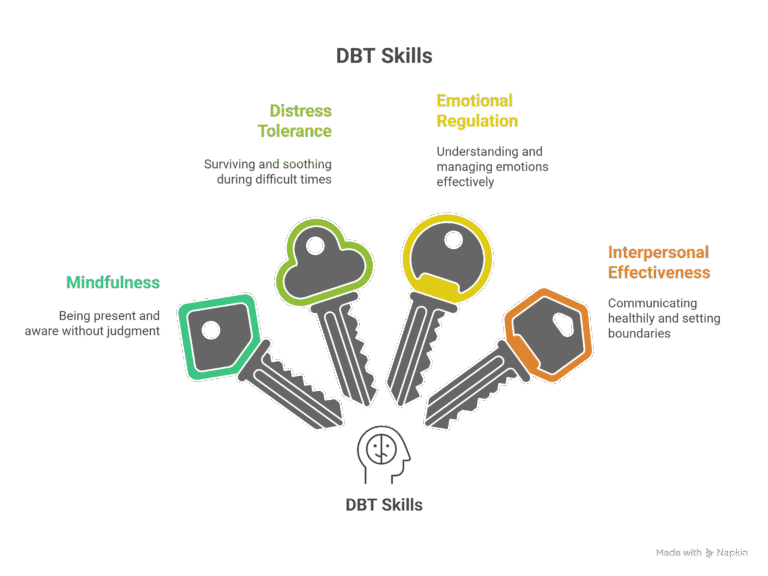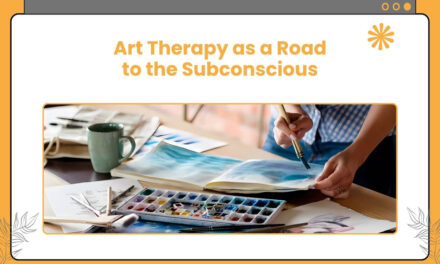Have you ever lashed out at someone and then regretted it after a few minutes, hours, or the next day? You say something you don’t mean in a fit of rage, and then it just lingers. There are days when your emotions can crash all at once. And then there are other days when you don’t feel anything. You feel worn out and don’t want to talk to anyone.
If this feels familiar, you’re not the only one. Sometimes emotions just take over. It happens. That’s where Dialectical Behavior Therapy, or DBT, comes in. DBT therapy is popular because it helps people manage these emotions.
In this blog, we will discuss what DBT is, what it does, and how it can make you feel more in charge of your emotions. So without further ado, let’s get into it.
What is Dialectical Behavior Therapy (DBT)?
DBT is a form of therapy that assists you in managing intense feelings and being better at relationships. The term “dialectical” refers to two things simultaneously being true. You can feel hate towards a person, but also that you don’t want them to abandon you. You can love yourself for who you are and wish to change the pain. That’s what DBT focuses on..
It was developed by Dr. Marsha Linehan for individuals who had difficulty managing their strong emotions and often had unstable relationships. Initially, it was employed to assist individuals with borderline personality disorder, but gradually it began assisting many others as well. Individuals suffering from anxiety, depression, eating disorders, or trauma also benefited from it.
What is the Process of DBT?
DBT is a fusion of concepts from both cognitive behavior and mindfulness. It is concerned with both acceptance and alteration. You learn to observe your thoughts without judgment, and simultaneously, alter behaviors that bring you pain.
Therapy is typically done in two ways. One is individual therapy, where you discuss your feelings, triggers, and challenges you face each week. The other is group therapy, where you role-play DBT skills with the people who are learning alongside you. Occasionally, there’s also phone coaching, where your therapist assists you in implementing what you learned when you’re having trouble in the moment.
The aim of DBT is straightforward. It keeps you present, lets you know what’s going on inside you, and prevents you from acting on autopilot. It’s all about learning to live without being dictated by your feelings.
Why DBT Works for Emotional Regulation?
When feelings become too intense, it’s simple to react first and think second. You may insult someone, cut everybody out, or do something you’ll later regret. DBT enables you to take a second and know what’s happening on the inside first. After you can label what you’re feeling, it is simpler to decide how to react.
The greatest advantage of DBT is emotional control. You begin to notice what angers or upsets you and how to manage it differently. The more you practice, the fewer wild ups and downs you experience. You become calmer, lighter, and more stable.
The Four Important DBT Skills
DBT has four primary skills that simplify life just a bit.
1. First is mindfulness.
It’s simply being present. You pay attention to how you’re feeling and to what’s around you. No judgment, no overanalyzing. It allows you to slow down and not react immediately.
2. Second is distress tolerance.
This one assists you in surviving the bad times. You learn little things to soothe yourself, such as breathing, grounding, or simply doing something that makes you feel secure.
3. The third skill is emotional regulation.
It teaches you what you’re feeling and why. Once you know that, it’s easier to manage how you respond instead of allowing emotions to rule you.
4. The fourth is interpersonal effectiveness.
It’s healthy to communicate with others. You discover how to ask for what you want, set boundaries when you have to, and maintain your peace in relationships.

These four skills are interconnected. When you apply them, life begins to seem a little more peaceful and more manageable.
- Learn More: DBT Skills Group for Women
DBT for Borderline Personality Disorder
Having borderline personality disorder feels like riding an emotional rollercoaster. You’re good one minute, then you feel rejected or not understood. DBT was created for this. It provides you with actual tools to manage emotional highs and lows and engage with others in healthier ways.
With DBT, you are taught that your emotions are legitimate, but they do not necessarily dictate what you do. You begin to break free of self-sabotaging habits and create a life that feels safer and more secure. Gradually, you feel peace and trust developing within you.
Common Dialectical Behavior Therapy Techniques
A lot of the DBT skills are easy, but they have an impact. One of the techniques is journaling. It helps you in putting your emotions on paper rather than keeping them inside. Another technique is breathing exercises to settle your body when you are upset. Your therapist may also do worksheets or role-play with you to help you practice in real life.
These tiny habits create emotional strength in the long run. You get to hold back before responding. You learn to soothe yourself rather than put yourself down. DBT skills also assist individuals in recovering from emotional abuse by showing them how to reclaim their minds and emotions.
- Check out: Virtual DBT Groups for Adults
Final Thoughts
DBT healing is a slow process. There are days when it seems easy. There are days when it doesn’t. Either way, small steps add up. Gradually, your emotions no longer feel like storms. Instead, they feel like waves you can swim through.
DBT is not about becoming someone different. It’s about being at peace with yourself and the people in your world. You can feel deeply without losing control. You can love others without losing yourself. Healing begins quietly, often with a single peaceful breath.





